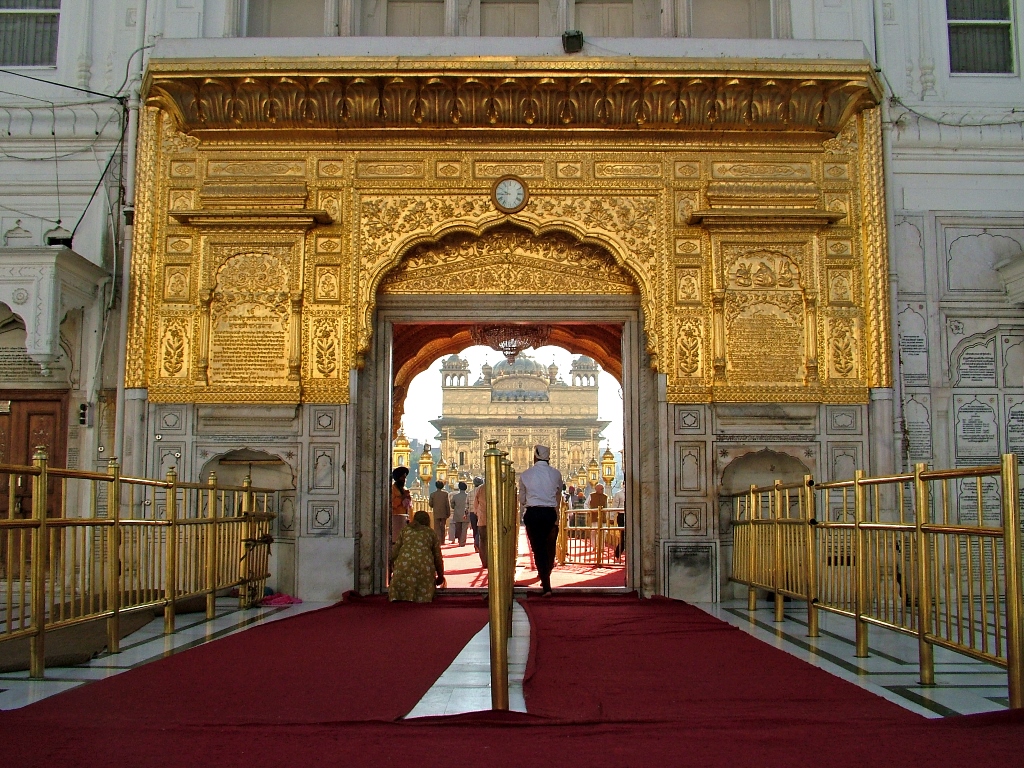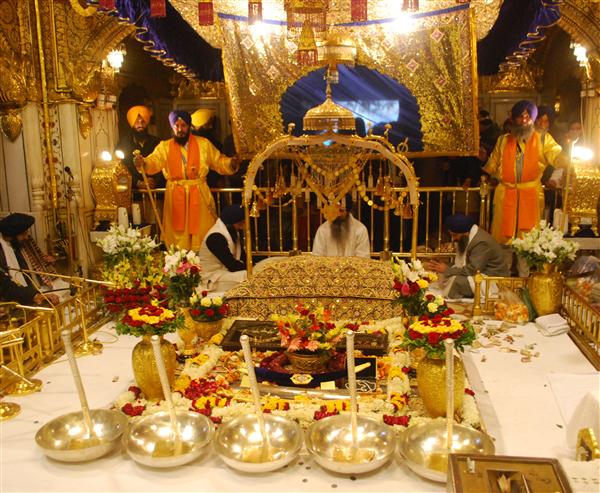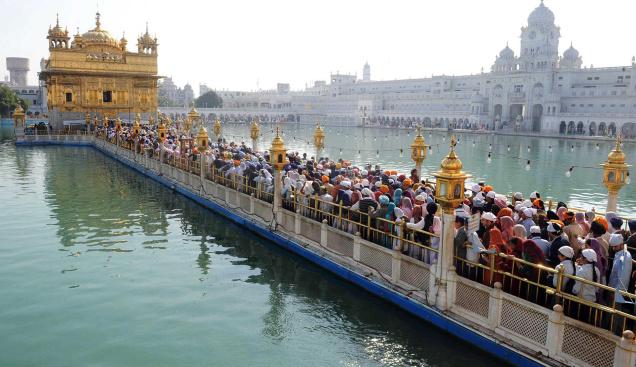Golden Temple Punjab
About Golden Temple
Sri Harmandir Sahib, also Sri Darbar Sahib and informally referred to as the "Golden Temple", is the holiest Gurdwara of Sikhism, located in the city of Amritsar, Punjab, India. Amritsar (literally, the tank of nectar of immortality) was founded in 1574 by the fourth Sikh guru, Guru Ram Das. The fifth Sikh Guru, Guru Arjan, designed the Harmandir Sahib to be built in the center of this holy tank, and upon its construction, installed the Adi Granth, the holy scripture of Sikhism, inside the Harmandir Sahib. The Harmandir Sahib complex is also home to the Akal Takht (the throne of the timeless one, constituted by the Sixth Guru, Guru Hargobind). While the Harmandir Sahib is regarded as the abode of God's spiritual attribute, the Akal Takht is the seat of God's temporal authority. The construction of Harmandir Sahib was intended to build a place of worship for men and women from all walks of life and all religions to come and worship God equally. Accordingly, as a gesture of this non-sectarian universalness of Sikhism, Guru Arjan had specially invited Muslim Sufi Saint, Sai Mian Mir to lay the foundation stone of the Harmandir Sahib. The four entrances (representing the four directions) to get into the Harmandir Sahib also symbolize the openness of the Sikhs towards all people and religions. Over 100,000 people visit the holy shrine daily for worship, and also partake jointly in the free community kitchen and meal (Langar) regardless of any distinctions, a tradition that is a hallmark of all Sikh Gurudwaras. The present-day gurdwara was rebuilt in 1764 by Jassa Singh Ahluwalia with the help of other Sikh Misls. In the early nineteenth century, Maharaja Ranjit Singh secured the Punjab region from outside attack and covered the upper floors of the gurdwara with gold, which gives it its distinctive appearance and its English name. The Harmandir Sahib literally means the Temple of God. Guru Amar Das had ordered Guru Ram Das to create a nectarous tank as a place for worship for the Sikh religion. Guru Ram Das instructed all his Sikhs to join in the work, under Bhai Budha's superintendence, and engaged labourers to assist them. He said that the tank of nectar should be God's home, and whoever bathed in it shall obtain all spiritual and temporal advantages. During the progress of the work, the hut in which the Guru first sheltered himself was expanded for his residence; it is now known as the Guru's Mahal, or palace. In 1578 CE Guru Ram Das excavated a tank, which subsequently became known as Amritsar (Pool of the Nectar of Immortality), giving its name to the city that grew around it. In due course, the Harmandir Sahib, was built in the middle of this tank and became the supreme centre of Sikhism. Its sanctum came to house the Adi Granth comprising compositions of Sikh Gurus and other saints considered to have Sikh values and philosophies, e.g., Baba Farid, and Kabir. The compilation of the Adi Granth was started by the fifth guru of Sikhism, Guru Arjan.
In keeping with the rule observed at all Sikh gurdwaras worldwide, the Harmandir Sahib is open to all persons regardless of their religion, colour, creed, or sex.
By Air: Sri Guru Ram Das Jee International Airport in Amritsar, located about 11 kilometeres away from the city-centre, is well connected to other cities in India and also to a number of international cities. There are daily flights to and from Delhi, Chandigarh, Jammu, Srinagar, Dubai, London, Toronto and Tashkent, among other cities.
By Rail: Amritsar Railway Station is the main station in the city and is well connected to almost all major cities in India including Delhi, Mumbai, Chennai, Hyderabad, Ahmedabad, Kolkata, Agra, and Chandigarh.
By Road: There are bus services available that connect Amritsar with cities like Delhi, Dehradun, Shimla, Jammu and other towns in North India. These include both government-run buses and coaches operated by private companies.
- Hotel sarovar regency.
- Hotel ritz plaza.
- Mango hotels.
- Hotel akaal regency.
- Wagah border.
- Jallianwala baug.
- Akal takht.
- Central sikh Museum.
.
.





